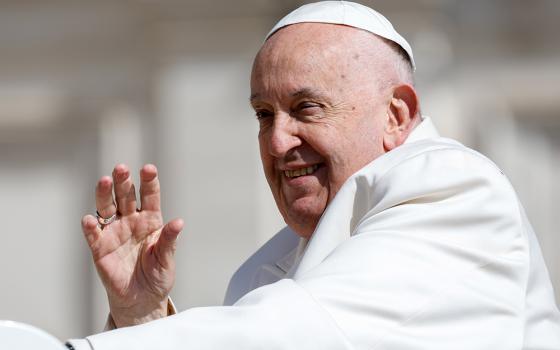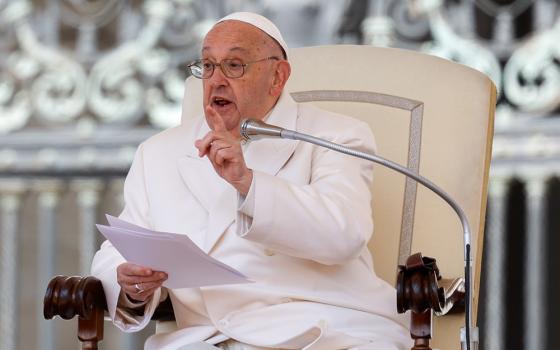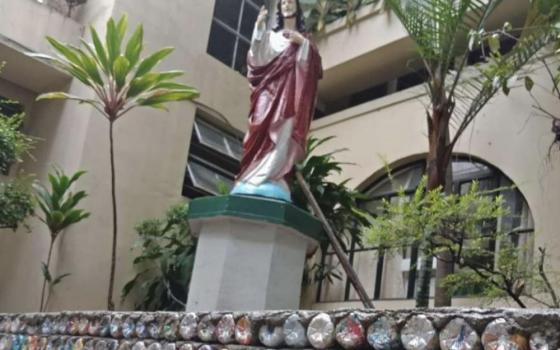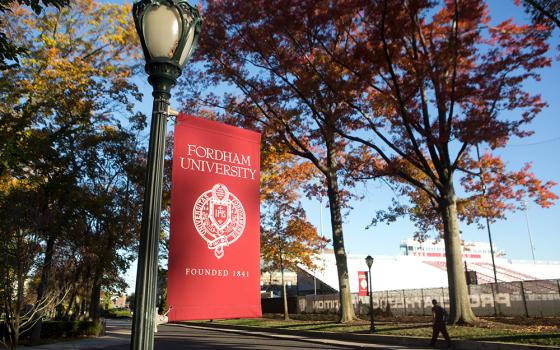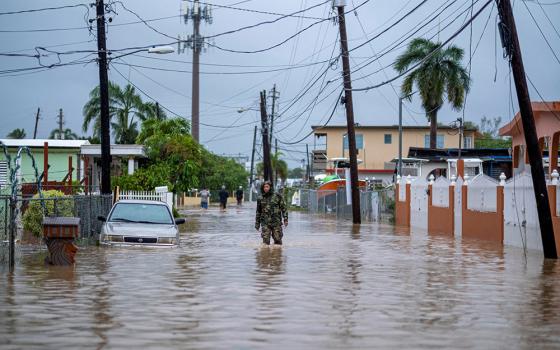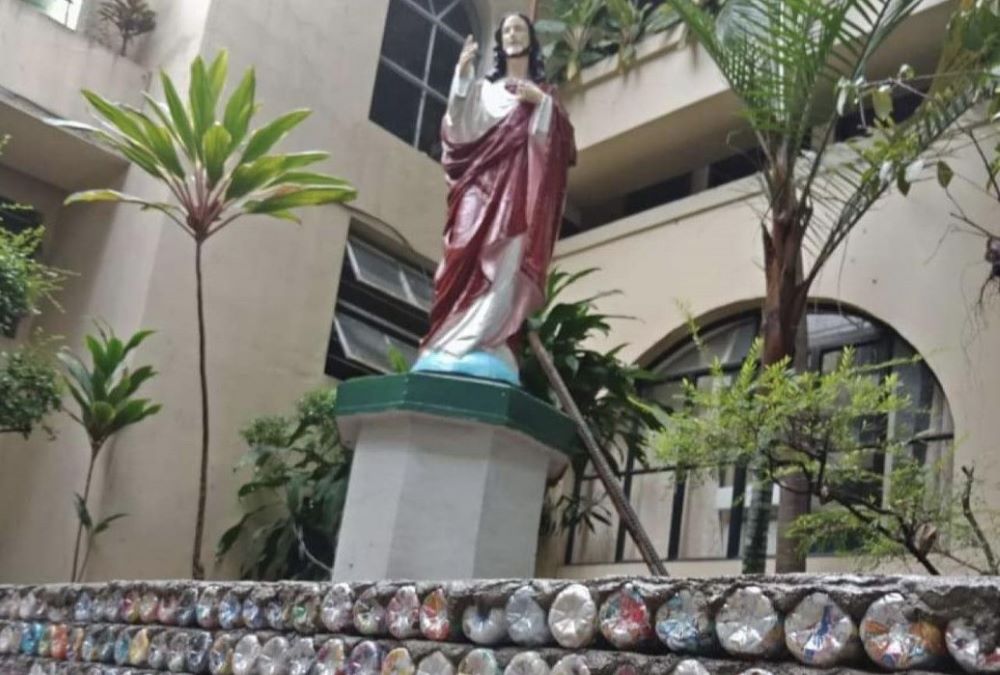
Plastic bottles stuffed with plastic, called "ecobricks," are visible everywhere at the seminary campus of the Missionaries of Sacred Heart, in Manila, Philippines, including in walls, planter boxes, garden fencing and altar decorations. (Courtesy of Missionaries of the Sacred Heart)
At the seminary for the Missionaries of the Sacred Heart in Manila, Philippines, thousands of plastic bottles can be found everywhere.
They're beneath trees. They're around gardens. They're in the church. And in some cases, they're even inside the walls.
Just where the priests-in-training placed them.
Rather than littering the campus, the bottles and other plastics have been repurposed into "ecobricks" that serve as building materials for projects around the grounds of MSC Scholasticate. Beyond construction, the novel bottle-bricks serve as ubiquitous reminders of the prevalence of plastics in the world and the efforts to reject the throwaway culture that Pope Francis regularly condemns.
"We have to care for our common home. And plastics destroy creation," said Missionary of the Sacred Heart Fr. James Espuerta.
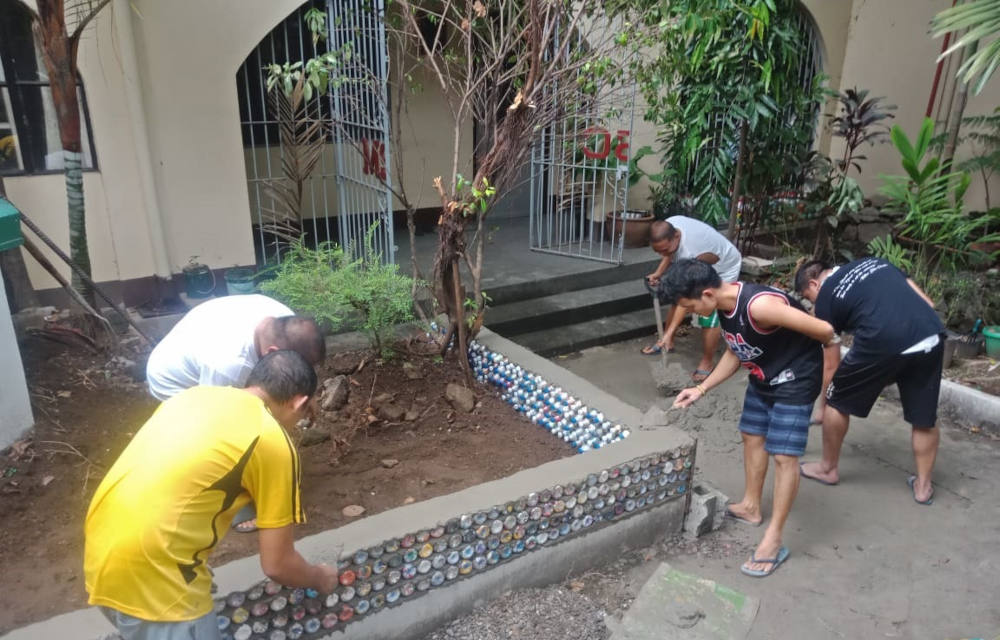
Since 2019, seminarians for the Missionaries of the Sacred Heart, in the Philippines, have been creating ecobricks from discarded plastics to use in building projects at their seminary in Manila. (Courtesy of Missionaries of the Sacred Heart)
Rector of the seminary from 2018 to 2023, Espuerta, 53, for years led classes of seminarians in making the ecobricks.
Each brick starts with an empty 1.5-liter plastic bottle, then other plastics are cut into smaller pieces and pressed into the bottle with a bamboo stick. All plastics are cleaned first and sometimes painted for a more artistic look. The process can be time-consuming, with a single brick sometimes taking as long as one day to make.
The Missionaries often use finished ecobricks and cement to build planter boxes around trees, barrier fences for gardens, and the bases of outdoor concrete tables and chairs. Inside their church, they have formed stands for flowers in front of the altar as well as a manger for a nativity scene.
The Missionaries' ecobricks program is part of their efforts under the Sowing Hope for the Planet campaign promoting ecologically sustainable actions among congregations and orders of women and men religious around the world. The Philippine order is also enrolled in the Laudato Si' Action Platform, a Vatican initiative where Catholic institutions create seven-year sustainability plans in the spirit of Francis' 2015 encyclical "Laudato Si', on Care for Our Common Home."
"Human beings are not the only residents in the world. We also have our brother creatures, and we have to take care of them," Espuerta said. "Being responsible for the use of the plastic could be a good way to save our environment."
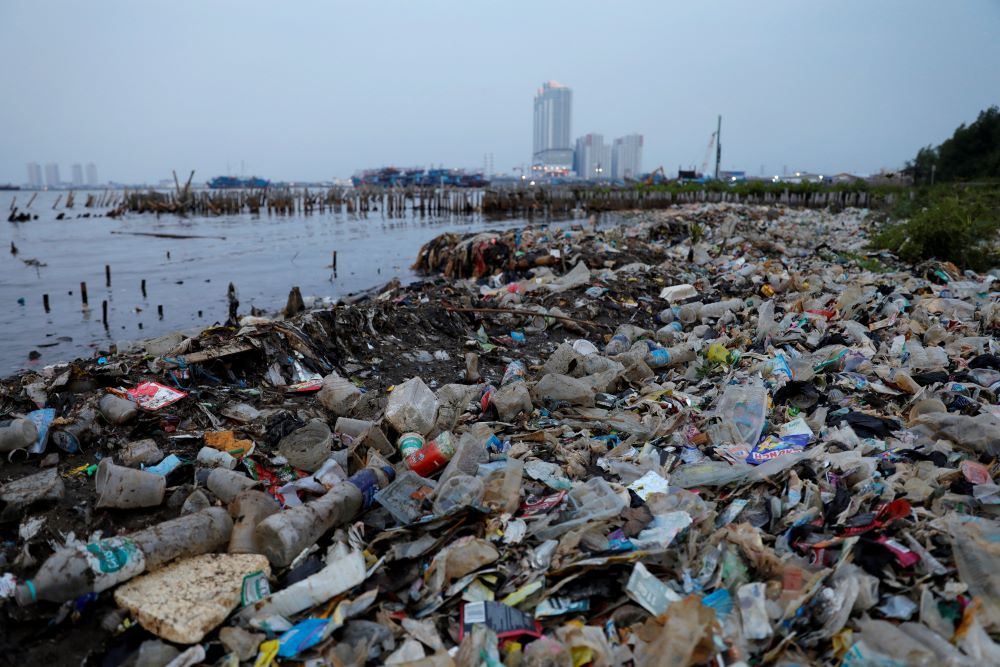
Rubbish, most of which is plastics, is seen along a shoreline in Jakarta, Indonesia, in this June 21, 2019, file photo. About 11 million metric tons of plastics enter the oceans each year, according to the Ocean Conservancy. (CNS/Reuters/Willy Kurniawan)
A global plastic problem
The Missionaries of the Sacred Heart's ecobricks are one example of the ways people and communities across the world are attempting to grapple with the gargantuan problem that plastic waste and plastic pollution poses to the planet and the health of humans, species and ecosystems.
According to the United Nations Environment Programme, or UNEP, the world produces 430 million metric tons of plastics every year, with two-thirds discarded shortly after use. About 11 million metric tons of plastics enter the oceans each year, or the equivalent of a garbage truck a minute, according to the Ocean Conservancy. That's in addition to 200 million metric tons already circulating.
The Philippines alone is responsible for more than one-third of plastic waste entering the oceans — by far the most of any country and triple the next closest, India. The vast levels of plastic waste there is attributed partly to the "sachet economy," where goods in small, sealed packages are bought in smaller and cheaper amounts. Sachets make up more than half the country's residual plastic waste stream, according to a report from the Global Alliance for Incinerator Alternatives, or GAIA, a network that advocates on zero waste, plastic and climate issues.
UNEP projects that plastic production will triple globally by 2060 without a course change.
'Human beings are not the only residents in the world. We also have our brother creatures, and we have to take care of them.'
—Fr. James Espuerta
In addition to polluting lands and waters, plastics pose serious health threats to humans and other species. More than 13,000 chemicals have been identified in plastic production, with at least 2,300 labeled "chemicals of concern," including carcinogens and endocrine disruptors.
Plastics don't biodegrade, and instead break into smaller and smaller "microplastics" that have been found in the stomachs of birds, fish, other marine species, livestock and more, as well as humans, including inside fetuses and babies. Some chemicals used in plastic production have been linked to cancer, heart disease, infertility, and can disrupt brain development, especially in children and infants.
While efforts to encourage recycling of plastics have existed for decades — a campaign begun by the plastics industry — today just 9% of plastics worldwide are actually recycled, and many forms of plastics are unable to be recycled at all.
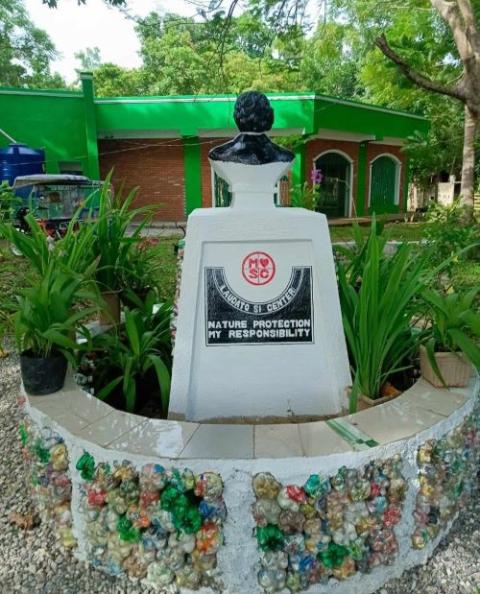
The Missionaries of the Sacred Heart create ecobricks as a means of reusing discarded plastics and redirecting them from landfills or incinerators. (Courtesy of Missionaries of the Sacred Heart)
Earth Day (April 22) this year has focused on "Planet vs. Plastics," with an emphasis on phasing out plastics, including a 60% reduction in production by 2040. This week, countries will meet in Ottawa, Canada, for the penultimate negotiating session on an international plastics treaty that is expected to be reached by the end of 2024.
As pope, Francis has repeatedly rebuked the throwaway culture that includes single-use plastics, and has called it "criminal" to toss plastics into the sea and an action that "kills" biodiversity and the Earth.
"The earth, our home, is beginning to look more and more like an immense pile of filth," Francis observed in Laudato Si'.
In addition to addressing waste, the pope has urged the world to end the use of fossil fuels, which along with driving climate change is at the heart of the plastic pollution problem.
The vast majority, 98%, of plastics are produced from oil and gas. UNEP estimates the lifecycle of plastics accounts for 3.4% of global greenhouse gas emissions, and is expected to grow to 19% by 2040 under current trends.
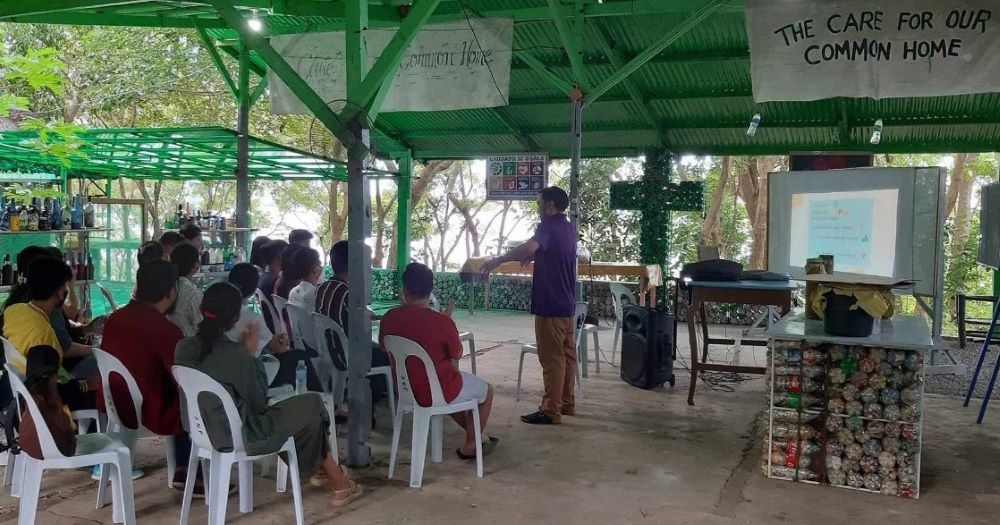
Priests with the Missionaries of the Sacred Heart lead trainings on how to construct ecobricks at their 15 parishes in the Philippines. The program is part of their order's creation care initiatives in the spirit of Pope Francis' encyclical "Laudato Si'." (Courtesy of Missionaries of the Sacred Heart)
Forming plastic into bricks
To limit the amount of plastic produced, people and communities are searching for ways to deal with the millions and millions of tons of plastics that clutter daily life and often litter lands and waters.
For the Missionaries of the Sacred Heart, making ecobricks has offered some promise.
"If we have plastics, instead of throwing them away or into the trash or to the garbage cart, better to keep them and then organize ecobrick-making," Espuerta told EarthBeat.
The idea of ecobricks traces its roots to the Igorot people of the northern Philippines and their concept of ayyew, the process of being in harmony with the ecological cycles of life. From this perspective, plastic is not seen as trash or waste, but a material that can be put to new uses.
From that starting point, the creation and use of ecobricks have spread to other parts of the world, including countries in South America and Africa.
The Global Ecobricks Alliance is a nonprofit "Earth Enterprise" that sets standards for ecobricking, provides training and offers information on the why and how of turning plastics into building materials. It was founded in 2015, several years after one of its co-founders, Russell Maier, experimented with making plastic bottle bricks as a way of diverting plastics from entering the Chico River in the Igorot lands in the Sabangan Valley.
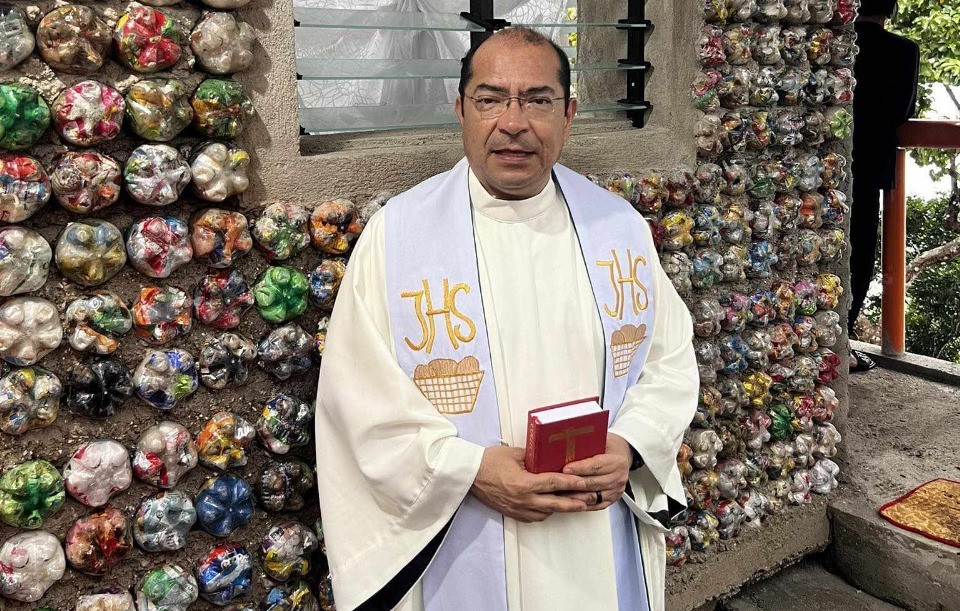
Fr. Mario Abzalon Alvardao Tovar, superior general of Missionaries of the Sacred Heart, visits Santo Nino Parish on Camotes Island in Cebu, Philippines, where parishioners constructed a chapel made from ecobricks. (Courtesy of Missionaries of the Sacred Heart)
The Missionaries of the Sacred Heart became involved in ecobricks in fall 2019 after they held a forum on the program at the Mary Hill School of Theology in Manila.
They have since expanded ecobricking into the more than dozen parishes they lead throughout the Philippines. At Santo Nino Parish, on Camotes Island in Cebu, they built a chapel partly with ecobricks. In some places, the Missionaries also operate plastic banks, where people in financial difficulty receive food in exchange for plastics they collect from their homes and on the streets.
Espuerta said parishioners and priests alike have been receptive to the ecobricks, seeing them as part of a solution to the overuse of plastics.
"There is a hope with this problem of overuse of plastics, that it can be minimized," he said.
Doubts about ecobricks
Groups working to end plastic pollution say while ecobricks may offer a short-term approach to the problem of existing plastics, they don't address the core problem — production — while presenting additional challenges.
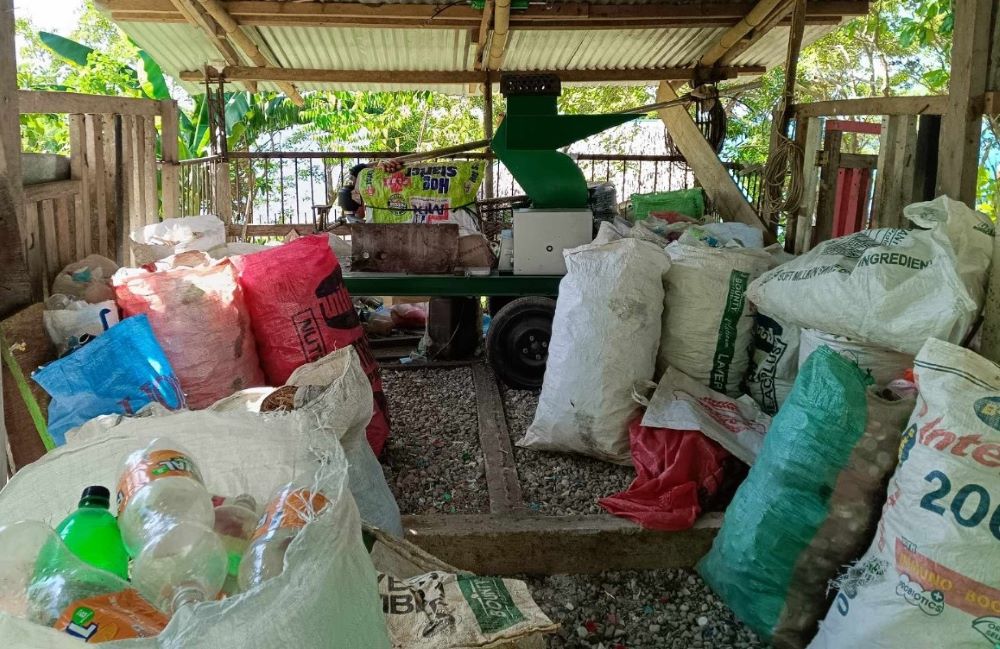
Missionaries of the Sacred Heart in Manila use discarded plastic to create ecobricks. Plastic bottles are stuffed with plastic pieces to be used as building materials. (Courtesy of Missionaries of the Sacred Heart)
The GAIA report examined various ways plastics are repurposed, including through ecobricks. Its authors raised concerns that the plastics will eventually break down, especially when exposed to sunlight, and then leach toxic substances into soil and water sources. They also raised questions about what happens to ecobricks at their end of life, as mixing multiple types of plastics would make recycling even more difficult.
"These kinds of projects are transitionary solutions until long-term policies and investments are in place, including policies and investments for a just transition," Mayang Azurin, GAIA Asia Pacific deputy director, told EarthBeat in an email.
The Global Ecobrick Alliance doesn't discount the harmful impacts plastics have on ecosystems, and says its standards for brick building sequester plastic by significantly reducing the amount of plastic surface area exposed to the elements. The alliance believes the bricks are part of the transition away from plastics and says they avoid the energy, expenses and heat-trapping emissions associated with recycling, dumping or burning the plastics.
Other groups working to end plastic pollution say attention needs to focus less on stopgap solutions, and instead on halting plastics at the point of production, including through laws and actions like the international plastic treaty.
"Every single scientific model that has investigated how to significantly reduce plastic pollution has found that we have to start by reducing the amount of plastics we are making and using in the first place," Anja Brandon, associate director for U.S. plastics policy with Ocean Conservancy, said during an April 10 press briefing on the plastics treaty.
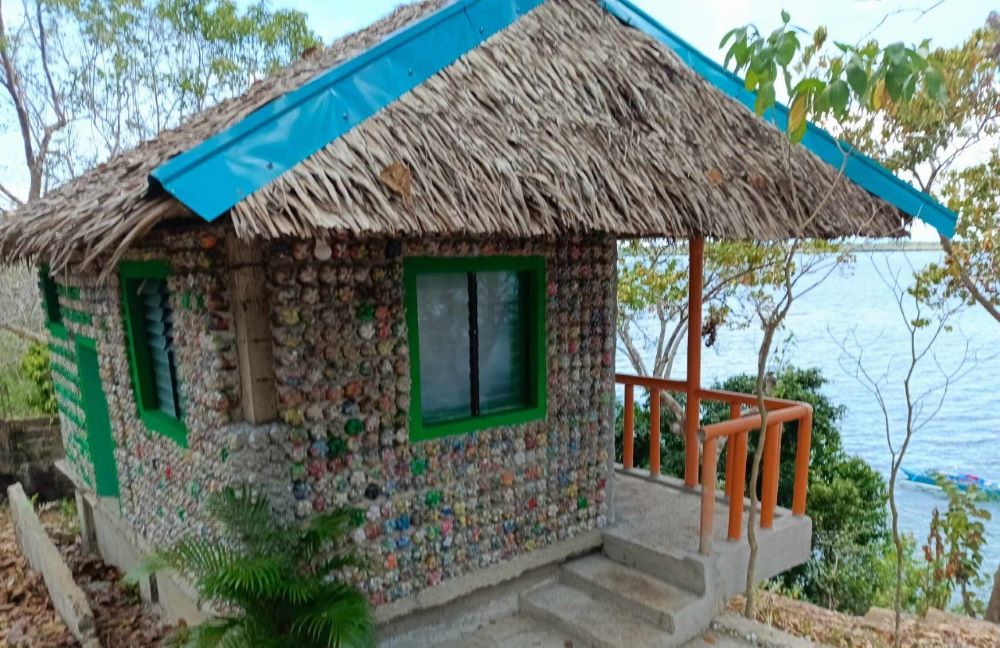
At Santo Nino Parish, Camotes Island in Cebu, Philippines, parishioners used ecobricks to construct a chapel. (Courtesy of Missionaries of the Sacred Heart)
"Unfortunately, solving plastic pollution is going to require much more than finding ways to deal with post-consumer plastic waste," Melissa Valiant, communications director with U.S-based Beyond Plastics, told EarthBeat. "The plastic pollution crisis will never be mitigated without drastic reductions to the production and use of plastic — this is a problem that needs to be stopped at the source."
The Missionaries of the Sacred Heart are under no illusion that ecobricks solve the problem of plastic pollution.
Advertisement
To that end, the Missionaries of the Sacred Heart have encouraged their priests and parishioners not to use single-use plastics, and swap them for paper or biodegradable options.
Espuerta said he's drawn hope from what he sees as a creative way of dealing with daunting piles of discarded plastics. They've also saved the Missionaries money, as they use less cement when building walls, furniture and garden fixtures.
For him, the process of making ecobricks has offered time for prayer and meditation, to reflect on the pope's messages about the throwaway culture and the need to better care for and beautify a common planetary home.
"We have to be serious with concern for our environment and minimizing the use of single use of plastic would be a good start," Espuerta said.






